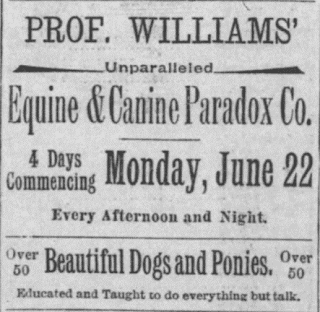The Battle of Antietam took place on September 17, 1862. It is
considered the bloodiest one-day battle of the Civil War with approximately
3,650 men killed and over 17,000 wounded. Around 9,550 of those wounded were
Union soldiers. Those who were too badly wounded to make the trip to Frederick,
Maryland were treated at two nearby Union field hospitals. Dr. Truman H. Squire
of Elmira was in charge of one of those hospitals at John Greeting’s Farm near
Keedysville, Maryland. The hospital was known as Crystal Springs or the Locust
Spring hospital, and, with 24 tents, was the largest hospital on the Union
left.
At the beginning of the Civil War, the Union army only had 98 medical
officers. At first, the military did not think an official medical corps was
needed because the war was not going to last very long. As the conflict dragged
on, however, more medical personnel were recruited. Most men who became doctors
in the mid-19th century did not attend medical schools. Rather, they would
apprentice with established doctors. Those who did go to medical school were
trained for two years or less and received practically no clinical experience.
In general, little was known about keeping sanitary condition or the use of
antiseptics to prevent infection at the time. “Surgical fevers” were a common
cause of death for those wounded in battle. Only 1 in 7 wounded soldiers survived.
Conditions within the hospitals that treated the Union soldiers
wounded at Antietam were notoriously bad. They were so bad, in fact, that the
government performed inspections of the facilities that November because of all
the complaints. While other hospitals won no praise during those inspections, the
Locust Spring hospital was declared a model operation by Assistant Medical
Inspector W.R. Mosely. Dr. Squire’s work at the hospital was specifically lauded
by Jonathan Letterman, surgeon and medical director of the Army of the Potomac.
He wrote in a letter to the Assistant Adjutant General of the Army of the
Potomac that “great care and attention were shown to the wounded at the Locust
Spring hospital by Surgeon Squire, Eighty-ninth New York Volunteers.”
 |
| Cases of gunshot fractured femurs at Battle of Antietam treated at Locust Spring Hospital by T.H. Squire – half of those treated died |
 |
| University of the State of New York College of Physicians and Surgeons Matriculation Ticket, session of 1847-48 for Mr. Truman H. Squire |
 |
| List of sick to be sent to the rear from 1st Brigade, 3rd Division, June 29, 1863, signed by T.H. Squire, Surg. |
 |
| List of medicines and hospital stores received of T.H. Squire, Surgeon, 89th New York Volunteers by surgeon of the 14th Pennsylvania Volunteers, November 19, 1863 |




















